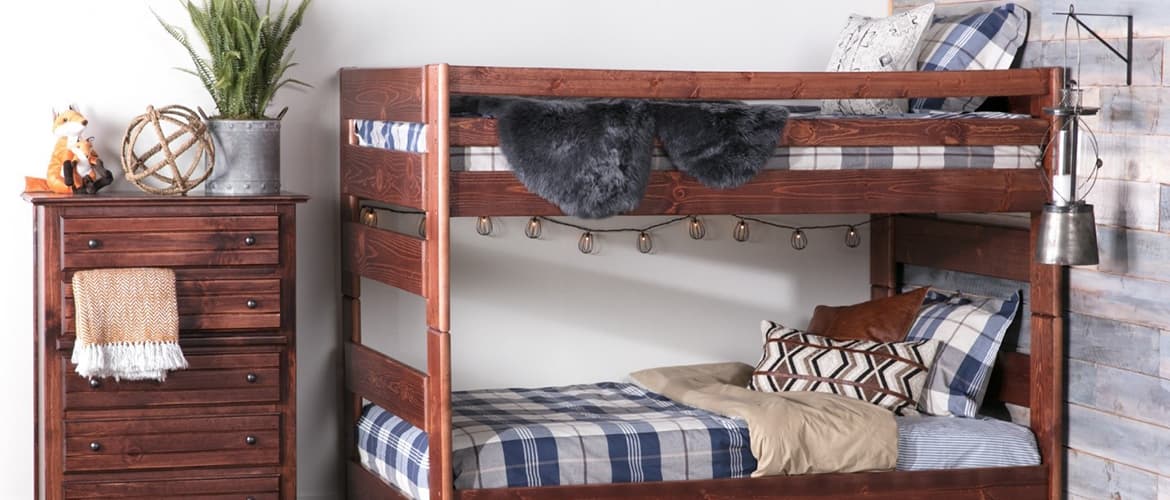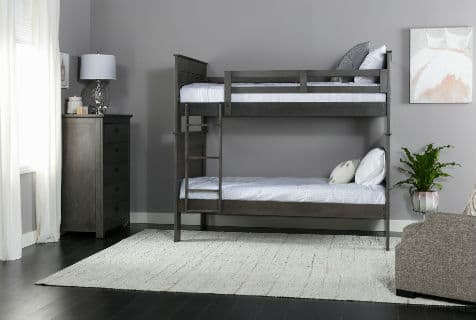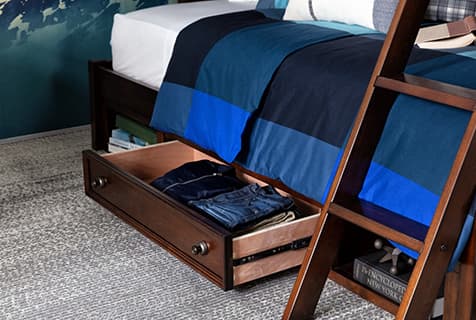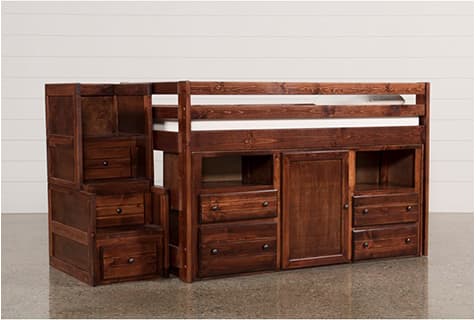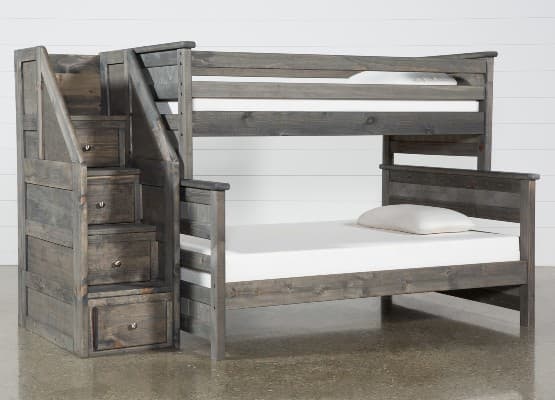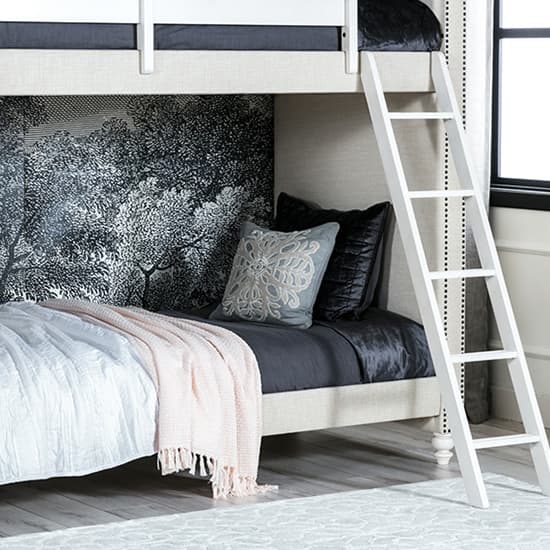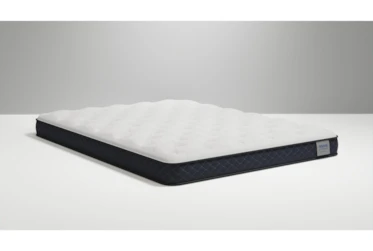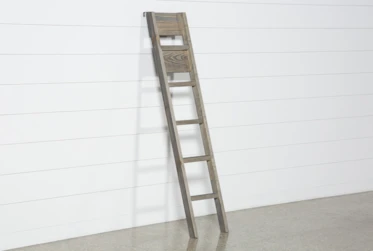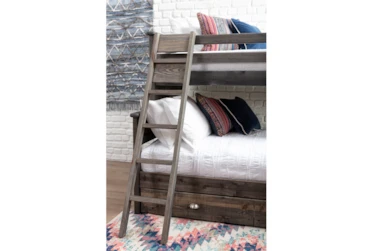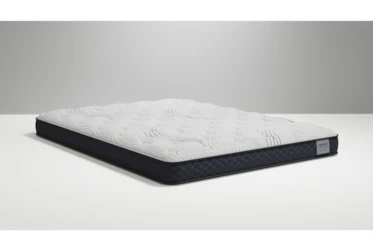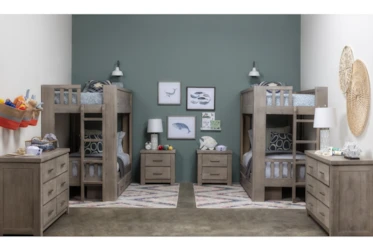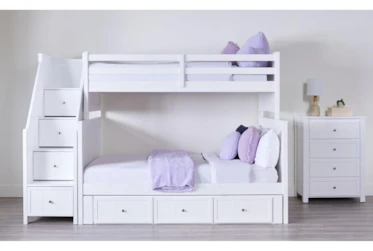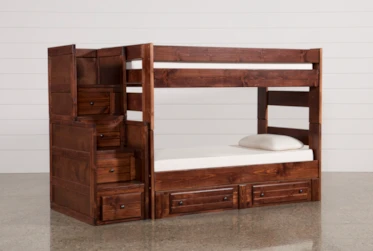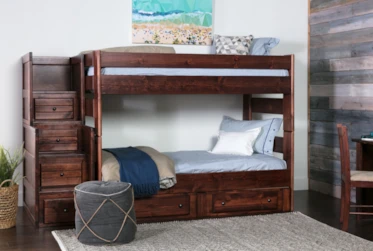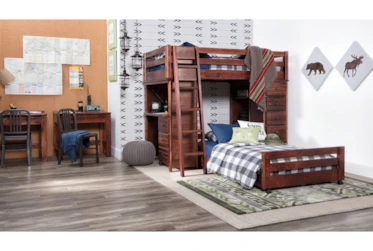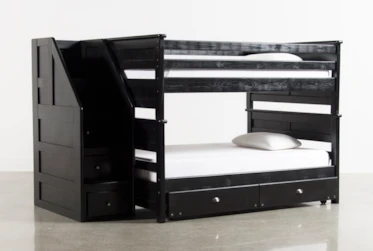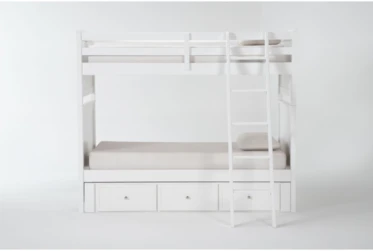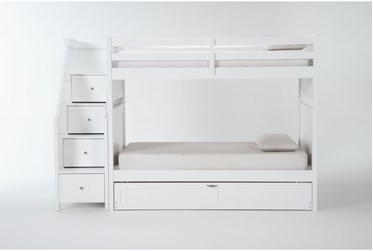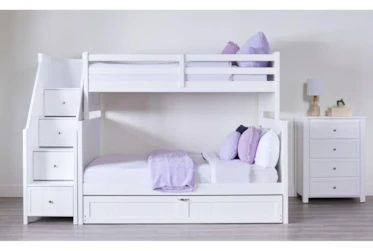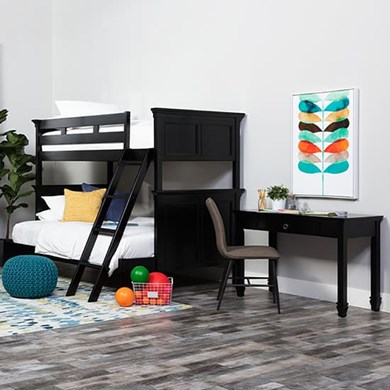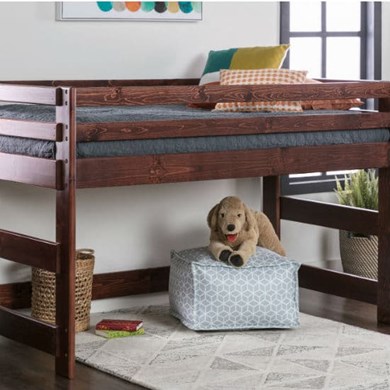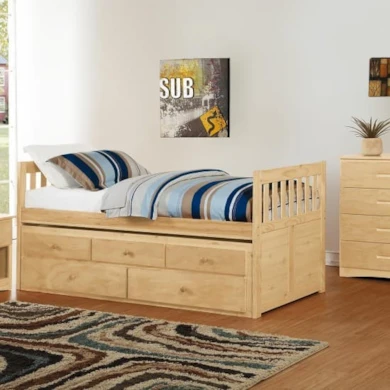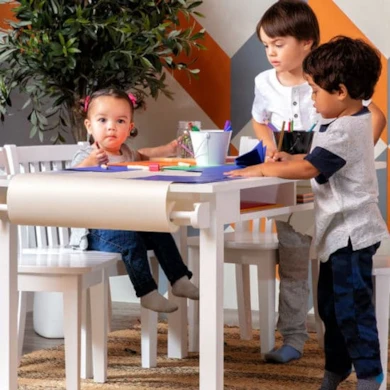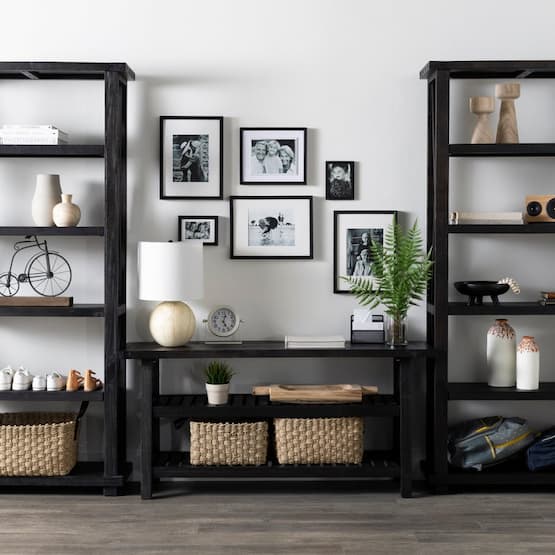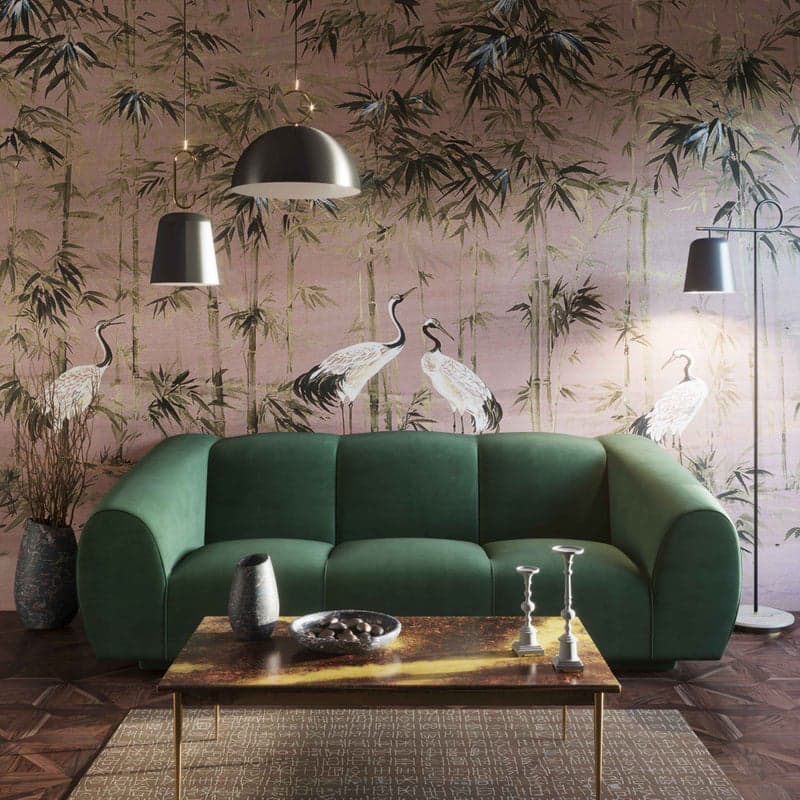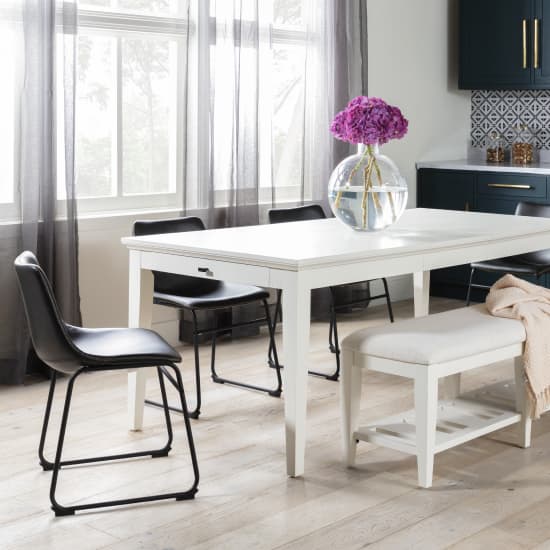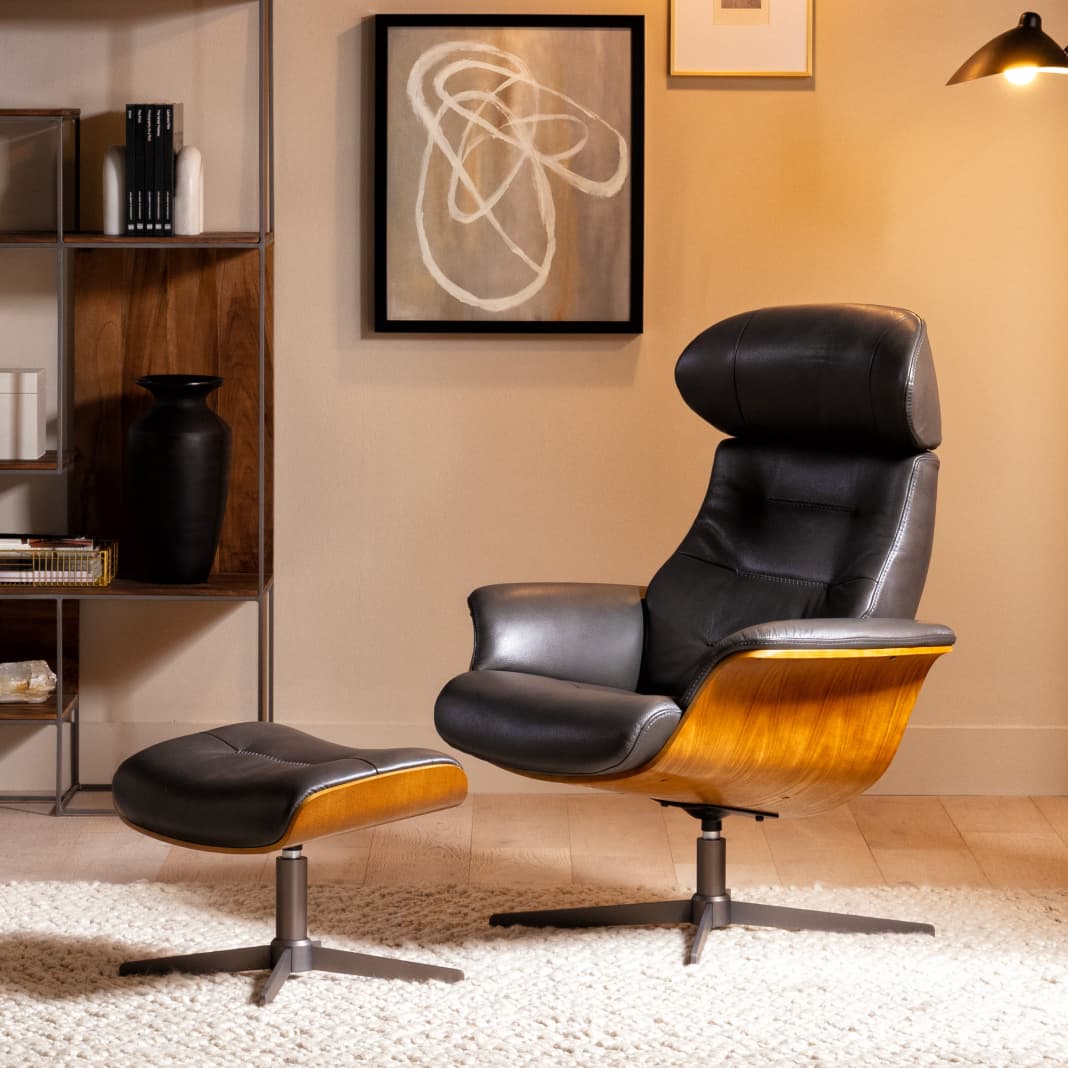Bunk Bed Buying Guide
Bunk Beds for Kids: Size, Material and Storage
1. Bunk Bed Size
Choosing the right size of bunk bed means considering your child’s age, height and bedroom space.
What are the standard bunk bed sizes?- The Twin over Twin bunk bed: One Twin bed on the top, one Twin bed on the bottom, the Twin over Twin is a popular choice for, well, twins!
- The Twin over Full bunk bed: One Twin bed on the top, one Full bed on the bottom, the Twin over Full is perfect for the older child who shares a bedroom with a younger sibling.
- The Full over Full bunk bed: One Full bed on the top, one Full bed on the bottom, the Full over Full will give two small children the bed space they can grow into.
- The Twin loft: One Twin bed on the top and space for a desk, storage or other bedroom necessity on the bottom, the clever design of a Twin loft maximizes space in style.
How much space should you leave between the bunk bed and ceiling? Before you decide on a bunk bed, make sure your ceiling is high enough for one; there should be at least 30 inches from the top bunk to the ceiling.
How thick should a bunk bed mattress be? You don’t need a special mattress for a bunk bed. Just make sure the mattress and bed size match (a Twin mattress should go in a Twin bunk, etc).
2. Bunk Bed Material
For bunk bed safety, stick to sturdy, durable materials that won’t deteriorate with time.
What are the standard bunk bed materials? For ultimate safety, each bunk bed is crafted from solid wood – including sturdy ponderosa pine, birch plywood and cedar.
What is the bunk bed weight limit? While it varies from model to model, the weight capacity for a Twin over Twin is usually within 150 pounds – and 400 pounds for a Twin over Full and Full over Full.
Which is the safest type of bunk bed? Each of the bunk beds in our collection is Children’s Product certified, which means it complies with the federal Consumer Product Safety standards. Whether it’s a bunk bed, loft bed, Twin, or Full (or something in between), you can rest easy knowing that the quality wood construction of each bunk bed is sturdy and durable, and meets the highest possible standards of safety for your child.
3. Bunk Bed Storage
Save space and keep tidy with bunk bed designs featuring desks, drawers and chests.
What is a bunk bed with desk? A bunk bed with desk will usually feature a loft bunk design with a built-in desk along the side panel. Variations also include two desks (one on each side).
What is a loft bed with storage? A loft bed, or a bunk bed without a bottom bunk, often comes with built-in storage space, including shelving and drawers.
What is a stairway chest? In a bunk or loft bed, a standard ladder can be replaced with a stairway chest – featuring a stairway design with spacious pull-out drawers in between each step.
The Best Bunk Bed Types for Your Children
- Standard Bunk Bed. The standard bunk bed features a sleek silhouette – simply one bed over the other – making it great for rooms small on space.
- Loft Bed. While a loft bed is typically a bunk bed without a bottom bunk, some loft beds also feature caster beds – a rollout bed mounted under the top bunk.
- Trundle Bunk Bed. The trundle bunk bed is a standard bunk bed with a third trundle mattress underneath the bottom bunk – and which can be pulled out at any time for a convenient third bed.
Bunk Beds with Storage to Keep Organized
1. Storage Bunk Bed
A kids classic, the storage bunk bed will often feature pull-out drawers underneath the bottom bunk – or even between the steps on the stairway!2. Loft Storage Bed
Loft storage bed: The loft storage bed takes storage space seriously: with stairway chests, counter space and shelving, the loft storage is like a closet and bed, all wrapped into one.
Bunk Beds: Stairs vs. Ladders
5 Signs Your Child Is Ready for the Top Bunk
Here’s how to tell when your children may be ready for a bunk bed.
- Your child is at least six years old.
Six years is considered the minimum age for the top bunk, as children who are any younger may not yet possess the skills required for safe navigation. - Your child adheres to safety rules. Before choosing a bunk bed, discuss with your child what the bunk bed is for, and make sure she demonstrates an understanding of rules of safety.
- Your child can confidently climb up (and down). Confidence is key when it comes to safety, so if your child can climb up and down the bunk bed ladder without hesitation, she may be ready for the top bunk.
- Your child is potty-trained. Nighttime accidents are no fun – especially if they occur on the top bunk. Wait until your child is potty-trained, day and night, to ensure a seamless bunk bed transition.
- Your child could use the bedroom space. Children need their space, especially those who share a room with a younger sibling. If another bed and other pieces of furniture are crowding a small area, a top bunk may be just what she needs to open up her bedroom space – and effortlessly refresh her style.
Featured Products
— More Great Articles —
Related Categories
Read the Latest
Editorial Disclaimer: Articles featuring tips and advice are intended for educational purposes and only as general recommendations. Always practice personal discretion when using and caring for furniture, decor and related items.
